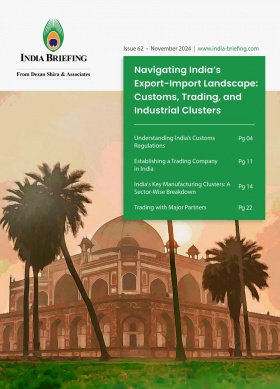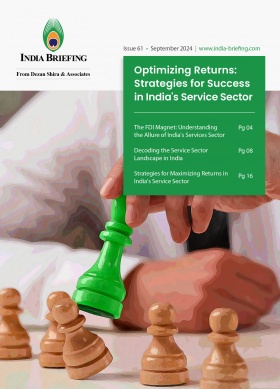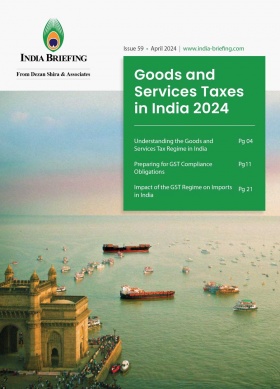Quick Commerce Market in India and Key Players
Quick commerce is transforming the e-commerce sector in India by offering ultra-fast delivery (10-30 minutes) for high-demand goods like groceries and personal care items. The sector is poised for massive growth, with India’s quick commerce market expected to reach US$5 billion by 2025 and US$9.94 billion by 2029 per some estimates. Key growth drivers include changing consumer preferences, increased e-commerce adoption, and demand for convenience among millennials and Gen Z.
Per an Economic Times report, the average order value (AOV) has grown to INR 500 from an initial INR 250 – raising this AOV is an essential focus for quick commerce players and will require moving consumption towards more premium categories. As of the quarter ending June 2024, Zomato’s Blinkit quick commerce app led AOV at INR 625. Interestingly, Blinkit partnered with Apple Premium Reseller Unicorn Infosolutions to make the iPhone 16 series (16 and 16 Plus) available on its platform along with standard discounts and EMI options on select credit cards.
Quick commerce market in India
India’s quick commerce market is witnessing intense competition among a few key players: Zepto, Zomato’s Blinkit, and Swiggy’s Instamart.
Zepto led in app downloads with nearly 11 million across Google Play and Apple’s App Store. Swiggy’s app, which includes Instamart, saw 9.8 million downloads, while Blinkit had approximately 6.6 million. Tata’s BigBasket e-commerce offering, offering BB Now within its main app, recorded about 3.5 million downloads, and Dunzo garnered fewer than a million.
Market share estimates place Blinkit at the forefront with 45 percent, Instamart at 27 percent, Zepto at 21 percent, and BB Now at 7 percent. The quick commerce model, initially emphasizing 10-minute deliveries, gained traction in India in 2021 during the pandemic when consumers shifted from local Kirana (neighborhood) stores to online platforms. Since then, quick commerce companies have heavily invested in dark stores, expanded product categories, and enhanced delivery capabilities to meet the growing demand. For instance, per a Business Today report, Zepto has 200-250 dark stores across metro hubs Mumbai, Delhi-NCR, Bengaluru, Hyderabad, Pune, and Chennai.
|
Quick Commerce Penetration – Indian Retail Market |
||
|
Year |
E-commerce |
Total retail |
|
2018 |
0.14 percent |
0.003 percent |
|
2023 |
4.8 percent |
0.3 percent |
|
2028 (Projected) |
17-30 percent |
2-3 percent |
Source: Grant Thornton Bharat, Economic Times
What are dark stores?
Dark stores are specialized retail outlets or warehouses exclusively designed for processing online orders. Unlike traditional stores, they are not open to the public. Instead, they serve as distribution hubs where inventory is stored, products are packaged, and orders are dispatched. Also referred to as dark shops, dark supermarkets, dotcom centers, or ghost stores, these facilities streamline the logistics of e-commerce.
Dark stores typically operate 24/7 and utilize advanced technologies like GPS and data analytics to optimize delivery routes, ensuring faster service. They are strategically located in city centers, targeting micro-markets within urban areas, which often results in higher rental costs compared to traditional warehouses. In India, rental rates for dark stores vary significantly across cities, ranging from INR 40 to INR 250 per square foot, depending on location.
Popular quick-commerce platforms such as Swiggy Instamart, Blinkit, and Zepto collectively operate around 1,200 dark stores in major cities across India, highlighting their growing importance in the country’s online shopping ecosystem.
City-wise rental rates for dark stores in India (per sq. ft.):
- Mumbai: INR 60–150
- Bengaluru: INR 50–80
- Chennai: INR 45–60
- Hyderabad: INR 35–50
- Pune: INR 40–60
- Delhi: INR 150–250
- Gurugram: INR 50–70
- Ahmedabad: INR 35–50
- Kolkata: INR 55–99
Leading quick commerce companies in India
India’s quick commerce industry has experienced explosive growth, with sales increasing by over 280 percent in two years, according to a Chryseum report. The industry’s Gross Merchandise Value (GMV) rose from US$500 million in FY 2021-22 to US$3.34 billion in FY 2023-24, growing at an annual rate of 73 percent. It is expected to reach US$9.95 billion by 2029, reflecting a CAGR of over 4.5 percent.
1. Zepto
Founded in 2021, Zepto has rapidly gained traction by offering grocery and essential delivery in as little as 8-10 minutes. Its network of over 100 micro-warehouses enables the company to fulfill 2,500 orders daily in cities like Mumbai, Delhi, Bangalore, and Chennai. Zepto also experiments with nominal platform fees and higher charges during peak times to enhance profitability.
2. Blinkit
Previously known as Grofers, Blinkit is a pioneer in the quick commerce space. It operates in 14 cities and boasts a market share of 46 percent, the highest among its competitors. With over 250 micro-warehouses and partnerships with 14,000 delivery agents, Blinkit ensures seamless operations and quick turnarounds, delivering essentials in 10-20 minutes.
3. Swiggy Instamart
Launched in 2020, Swiggy Instamart leverages Swiggy’s existing delivery infrastructure to deliver groceries within 45 minutes across 18 cities. By collaborating with dark stores and utilizing eco-friendly delivery methods like e-bikes, it has become a formidable player with a 27 percent market share.
4. Dunzo
Dunzo Daily focuses on delivering groceries, medicines, and household essentials in 35-40 minutes. It uses AI-powered logistics to optimize deliveries and manage demand efficiently. Dunzo also generates additional revenue through partnerships with D2C brands advertising on its platform.
5. BigBasket
BigBasket, known for its expansive grocery offerings, has entered the quick commerce market with BB Now. Operating in over 40 cities, it combines its existing infrastructure with dark stores and Kirana partnerships to deliver groceries quickly while maintaining its reputation for quality and reliability.
What’s behind the quick commerce market boom in India: Key growth drivers
- Changing consumer expectations
Today’s consumers demand instant gratification and personalized experiences. The convenience of smartphones has fueled the expectation of seamless and rapid services. Quick commerce caters to this demand by offering unparalleled delivery speeds, making it a go-to option for time-conscious buyers.
- The on-demand economy
Quick commerce thrives on optimizing efficiency by leveraging advanced logistics and real-time data. Unlike traditional supply chains, it operates on an on-demand model, ensuring goods reach consumers in record time, often bypassing outdated retail processes.
- Technological advancements
The growth of quick commerce is inseparable from technological innovation. AI-powered algorithms, robotic automation, and cloud platforms streamline order fulfillment, enhance inventory accuracy, and improve overall customer satisfaction. These technologies ensure that businesses can handle high demand while maintaining top-notch service quality.
- Impact of COVID-19
The COVID-19 pandemic acted as a catalyst for quick commerce, accelerating the demand for quick and contactless deliveries. Lockdowns and social distancing measures pushed consumers toward online shopping, with quick commerce stepping in to meet the need for fast and safe delivery solutions.
- Integration with existing industries
Quick commerce seamlessly integrates with traditional businesses like grocery and kirana stores, D2C brands, and restaurants, thereby enhancing operational efficiency. These collaborations optimize order processing and improve last-mile delivery, creating a win-win situation for businesses and consumers alike. Platforms generate additional income through targeted advertisements, contributing to profitability.
Furthermore, quick commerce operates 24/7, offering consumers the flexibility to shop and schedule deliveries at their convenience. Its competitive pricing, enabled by bulk purchasing and economies of scale, makes it an attractive option for a broad customer base.
Challenges and outlook
Despite its rapid growth, quick commerce faces profitability challenges due to high operating costs, last-mile delivery complexities, and stiff competition. Companies are addressing these issues by optimizing dark store efficiency, encouraging higher-order values, and diversifying into non-grocery categories like electronics and cosmetics.
The future of quick commerce in India is promising, with opportunities to expand into untapped markets and explore high-value categories. As players continue to innovate and adapt, the quick commerce sector is set to become a cornerstone of India’s retail ecosystem, catering to the evolving needs of modern consumers.
Ultimately, India’s quick commerce market is revolutionizing how people shop, offering speed and convenience at their fingertips. With a few key players leading the charge and considerable untapped potential, quick commerce is poised to significantly impact the future of retail in India.
(With inputs from Melissa Cyrill.)
About Us
India Briefing is one of five regional publications under the Asia Briefing brand. It is supported by Dezan Shira & Associates, a pan-Asia, multi-disciplinary professional services firm that assists foreign investors throughout Asia, including through offices in Delhi, Mumbai, and Bengaluru in India. Dezan Shira & Associates also maintains offices or has alliance partners assisting foreign investors in China, Hong Kong SAR, Vietnam, Indonesia, Singapore, Malaysia, Mongolia, Dubai (UAE), Japan, South Korea, Nepal, The Philippines, Sri Lanka, Thailand, Italy, Germany, Bangladesh, Australia, United States, and United Kingdom and Ireland.
For a complimentary subscription to India Briefing’s content products, please click here. For support with establishing a business in India or for assistance in analyzing and entering markets, please contact the firm at india@dezshira.com or visit our website at www.dezshira.com.
- Previous Article How the PM Gati Shakti National Master Plan is Advancing India’s Infrastructure Sector
- Next Article Modernizing India’s Maritime Economy: 2 Bills Tabled in Parliament








